
Whiplash: How to Survive Our Faster Future
by
Joi Ito
and
Jeff Howe
Published 6 Dec 2016
In 2001, Overdeck and Siegel launched their own quantitative investing company, Two Sigma. The company doesn’t disclose its returns, but while Wall Street banks are shrinking staffs and scaling back their operations, Two Sigma is growing. Its office culture, befitting the quant ethos, bears more resemblance to a San Francisco start-up than to a financial services firm. On a recent Friday morning, young men wearing hoodies and untucked oxford shirts milled about the spartan lobby eating bagels and lox. “It’s a Friday morning tradition,” said one of them, standing in line for a cappuccino. In 2013 the number of software and data specialists hired by Two Sigma exceeded the firm’s hires for analysts, traders, and portfolio managers.4 Siegel doesn’t regard technology merely as a tool for making money.
…
In December 2013 a gaggle of teenagers gathered in a small conference room in the offices of Two Sigma, the hedge fund company owned by David Siegel, Mitch Resnick’s coconspirator in promoting the children’s programming language Scratch.6 If you look at a map, most of the teenagers at the office that day lived within walking distance of the hedge fund office. But by any other measure, they existed in an alternate universe. These were city kids, mostly black or Latino, a demographic woefully underrepresented in science and technology fields. They took weekly classes at Two Sigma, part of a program Siegel created a few years ago in which some of his best, hotshot programmers are encouraged to take time out from trading to teach kids to code.
…
It’s a testament to Siegel’s sincerity that this program started well before his work with Mitch Resnick and the Scratch Foundation. No fanfare is attached to this partnership with local schools; no press releases have been issued. Jeff learned about it only incidentally when he happened to meet Thorin Schriber, the Two Sigma employee who heads up the classes. On that day the students were joined by a trio of women wearing stylish clothes and heels. They worked for Two Sigma, but were there to participate in the “Hour of Code Challenge,” a new initiative held in conjunction with “Computer Science Education Week.” The project was the brainchild of Code.org, a nonprofit group that shares some of the same goals as the Scratch Foundation.
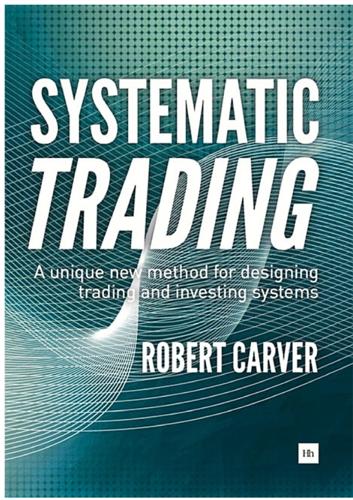
Systematic Trading: A Unique New Method for Designing Trading and Investing Systems
by
Robert Carver
Published 13 Sep 2015
If returns are Gaussian normal, then the mean and standard deviation alone are sufficient to say how likely certain returns will be. If your daily returns are Gaussian normal then you will see movements one sigma or less around the average about 68% of the time, and returns two sigma or less about 95% of the time. In 2.5% of days you’d see a change more than two sigma above the average. You’d also see a return which is two sigma worse than the average 2.5% of the time. The Gaussian normal distribution is symmetric. Let’s consider the 200% annualised standard deviation mentioned above. 200% a year translates into 12.5% a day if you divide by the square root of time, 16.
…
It is useless for comparing assets where infrequent large losses occur with others that have rare large gains; for this you need to consider skew. CONCEPT: SKEW In chapter one when discussing standard deviation I said that a large loss was as likely as a large gain for the symmetric Gaussian normal distribution. A two sigma move up in price would occur around 2.5% of the time, with the same chance of a two sigma move down. But many assets don’t have a symmetric distribution – their returns are skewed to one side or the other. In many cases large losses are more likely than large gains. 26. The US Fed funds rate, UK Bank of England base rate, or whatever is relevant elsewhere. 27.
…
The further away the mean is from zero, as measured in units of sigma, the more likely the unknown SR is actually positive. This test is commonly used with a threshold of two sigma. If an estimated average SR is more than two standard deviations above zero there would only be a 2.5% chance of this happening if the true SR was actually negative. Figure 11 shows the evolution of the average measured SR for an arbitrary trading rule, and around it the upper and lower ‘confidence intervals’. Each confidence interval is two sigma away from the average, so when the lower interval pushes above zero I know there is only a 2.5% chance the trading system is really a loss making rule in disguise.
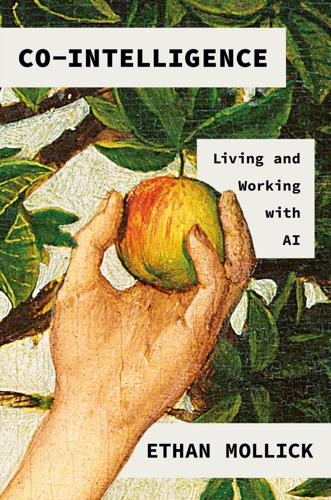
Co-Intelligence: Living and Working With AI
by
Ethan Mollick
Published 2 Apr 2024
This means that the average tutored student scored higher than 98 percent of the students in the control group (though not all studies of tutoring have found as large an impact). Bloom called this the two sigma problem, because he challenged researchers and teachers to find methods of group instruction that could achieve the same effect as one-to-one tutoring, which is often too costly and impractical to implement on a large scale. Bloom’s two sigma problem has inspired many studies and experiments to explore alternative teaching methods that could approximate the benefits of direct tutoring. However, none of these methods has been able to consistently match or surpass the two sigma effect of one-to-one tutoring that Bloom claimed. This suggests that there is something unique and powerful about the interaction between a tutor and a student that cannot be easily replicated by other means.
…
The ability to unleash talent, and to make schooling better for everyone from students to teachers to parents, is incredibly exciting. We stand on the cusp of an era when AI changes how we educate—empowering teachers and students and reshaping the learning experience—and, hopefully, achieve that two sigma improvement for all. The only question is whether we steer this shift in a way that lives up to the ideals of expanding opportunity for everyone and nurturing human potential. 8 AI AS A COACH The biggest danger to our educational system posed by AI is not its destruction of homework, but rather its undermining of the hidden system of apprenticeship that comes after formal education.

How to Speak Money: What the Money People Say--And What It Really Means
by
John Lanchester
Published 5 Oct 2014
For something to be a one-sigma event means that it happens about a third of the time. You should never be surprised by a one-sigma event. Two sigma covers 95 percent of the data. A two-sigma event is something outside that range of probability; in other words, something that happens 5 percent of the time. That’s a one-in-twenty event. From experience, I’d say this is the probability that a social event you’re not looking forward to will be canceled on the day. This is the level of accuracy used in things like opinion polls. Two sigma is a threshold often used in science—for instance by the International Panel on Climate Change, which says that the probability that global warming is man-made is 95 percent.
…
The overreliance on these models is one of the things that helped cause the credit crunch. On a personal note, I find it quite helpful to think about these levels of probability in daily life: if the thing you’re worrying about is a one-sigma event, it’s probably worth a bit of thought. If it’s a two-sigma event, you can banish it from your mind until you have some other reason for thinking that it’s more likely than that. Anything higher than two sigma, forget about it. SMEs Small and medium enterprises. In Europe there is a formal definition of the terms: “micro” means up to 10 employees, “small” up to 50, “medium” up to 250. They are of particular importance at the moment, since historically it’s SMEs that lead the charge when an economy is emerging from recession.

Heart of the Machine: Our Future in a World of Artificial Emotional Intelligence
by
Richard Yonck
Published 7 Mar 2017
If this isn’t simply a function of the quality of tutoring, then is the mere presence of a cognitive actor, even a nonhuman one, sufficient to trigger certain socio-behavioral responses in us? Consider what is known in education research as “Bloom’s two sigma problem.”6 Observed and reported by educational psychologist Benjamin Bloom in 1984, this refers to the results of several studies in which tutored students scored in the 98th percentile (otherwise known in the field of statistics as two sigmas above mean) when compared to untutored students.7 The effect was replicated across several studies. Given that, what should we make of the evidence that the mere presence of a robot tutor appears to consistently produce a one-sigma improvement, or approximately 68th percentile above mean?
…
Does this indicate the phenomenon has as much to do with our own psychology as with the actual quality of guidance? Will such an effect continue over a long period of time, or does it wane as a user becomes accustomed to the mentor? Only time and more research will tell, but it is certainly worth exploring. In the meantime, Bloom’s two sigma problem suggests some interesting strategies for improving other educational outcomes as well. Various researchers see socially assistive robot tutors and artificial emotionally intelligent machines as a path toward individualized learning.8 This is not simply a matter of providing information and guidance through a new channel, but rather of approaching learning in an altogether new way.
…
“The Physical Presence of a Robot Tutor Increases Cognitive Learning Gains.” CogSci 2012 Proceedings. 6. Bloom, B. “The 2 Sigma Problem: The Search for Methods of Group Instruction as Effective as One-to-One Tutoring,” Educational Researcher, 13:6(4–16), 1984; Wikipedia. https://en.wikipedia.org/wiki/Bloom’s_2_Sigma_Problem. 7. In normal distributions, two sigma or two standard deviations is equal to about 95.45 percent. However, in his paper, Bloom references several data sources that exceed 90 percent and focuses on results of 98 percent. 8. Leyzberg, D., Spaulding, S., Scassellati, B. “Personalizing Robot Tutors to Individuals’ Learning Difference.” Proceedings of the 2014 ACM/IEEE International conference on Human-robot Interaction, March 3–6, 2014, Bielefeld, Germany. 9.
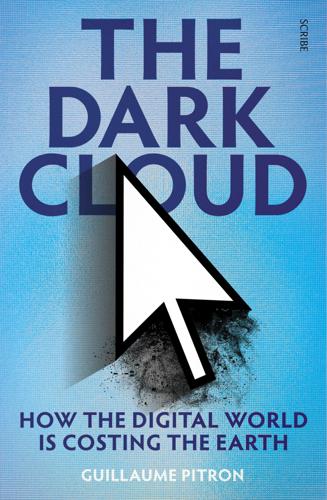
The Dark Cloud: How the Digital World Is Costing the Earth
by
Guillaume Pitron
Published 14 Jun 2023
The machine can perceive positive market correlations like no human can, and is able to suggest detailed investment strategies adapted to a given market environment.21 ‘BlackRock is better off spending money on a machine than on the salaries of analysts, who are expensive and less efficient’, says Juan Pablo Pardo-Guerra matter-of-factly.22 Thus the world of finance is finding itself increasingly emptied of humans facing off each other to make the biggest profit.23 As recently asserted by an academic, it is a world where ‘individual personalities play a partial role at best’.24 It follows, therefore, that in 2020, BlackRock announced that it was laying off several thousand of its employees — increasingly, financial analysts — who had become obsolete because of the superior performance of algorithms.25 ‘The ultimate fantasy of quants is to have employees only to turn a few buttons every now and then to make sure everything works’, says the same former analyst.26 We can guess what happens next. ‘Once all the infrastructure works, it doesn’t take a lot of imagination to then say: “Perhaps the computer can make [investment] decisions on its own”’, postulates Michael Kearns, a professor of computer and information science.27 This was the case of funds such as Two Sigma at Renaissance Technologies, which has already taken automation a step further with tools so powerful that they are often associated with the somewhat catch-all term ‘artificial intelligence’ (AI). A multinational on a quest for passive investments And so alongside ‘active’ funds, where investment decisions are made mostly by humans, are a growing number of ‘passive’ funds, whereby financial transactions are increasingly put on autopilot.
…
These are often index funds that track market indices — such as the S&P 500, based on the 500 biggest companies listed on the US stock exchanges — and long-term investment in these companies. This lowers operating costs, resulting in bigger profit margins. This is the sweet spot for BlackRock, Vanguard, Renaissance Technologies, and Two Sigma. Passive funds are huge, and in the US today they invest more than active-management funds.28 Quant funds are only the tip of the iceberg. The entire financial sector is following suit by increasingly becoming a business of coding, algorithms, and computing. Enter the multinational corporation Encana.
…
A super-intelligence will never take over global finance: circuit-breakers exist, and central banks have become too powerful and interventionist to be overrun by machines. But our gradual surrender to the power of algorithms is undeniable, and the refusal to change the codes that govern passive funds is highly symbolic … ‘Delegating our decisions to algorithms tends to disempower us’, says professor Juan Pablo Pardo-Guerra.43 Case in point: the Two Sigma fund, which has made its prodigious IT infrastructure the cornerstone of its success, warns that software errors that could lead to poor investment decisions ‘are entirely beyond the control’ of the fund!44 If the burden of responsibility shifts from creator to creature, it must itself be assigned, de facto, a part in the fight against global warming — including accountability for possible failure.
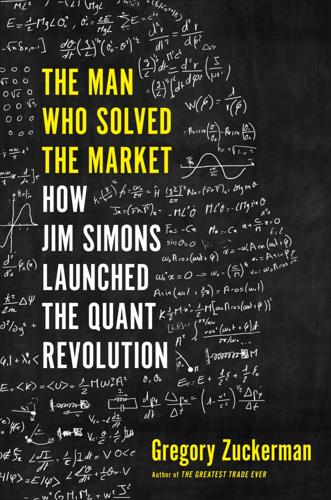
The Man Who Solved the Market: How Jim Simons Launched the Quant Revolution
by
Gregory Zuckerman
Published 5 Nov 2019
The opening suggested that a key regulatory decision for a drug the two companies were developing might be imminent, a piece of news that escaped all but those with the technology to instantly and automatically scour for job listings and similar real-time information.5 Quant investors had emerged as the dominant players in the finance business. As of early 2019, they represented close to a third of all stock-market trades, a share that had more than doubled since 2013.6 Spoils have accrued from that dominance. In 2018, Simons made an estimated $1.5 billion, while the founders of rival quant firm Two Sigma Investments earned $700 million each. Ray Dalio of Bridgewater Associates—which is a systematic, rules-based investment firm, but not quantitative—made $1 billion, as well. Israel Englander, Simons’s combatant in the fight over the two renegade Russian traders, pulled in $500 million.7 In early 2019, Ken Griffin, who focuses on quant and other strategies at his Chicago-based firm, Citadel, dropped jaws after he spent $238 million for a New York penthouse, the most expensive home ever sold in the country.
…
Exponential growth in computer processing power and storage capabilities has given systematic traders new capabilities to sift through all that data. According to Singularity Hub, by around 2025, $1,000 will likely buy a computer with the same processing power as the human brain. Already, hedge-fund firm Two Sigma has built a computing system with more than one hundred teraflops of power—meaning it can process one hundred trillion calculations a second—and more than eleven petabytes of memory, the equivalent of five times the data stored in all US academic libraries.9 All that power allows quants to find and test many more predictive signals than ever before.
…
Watson Research Center, 172 Thorp, Edward, 30, 97–98, 127–29, 130, 163 tick data, 112 Toll, John, 33 tradeable effects, 111 trading errors, 166 trading signals, 3, 83–84, 203–5, 246–47, 312 trenders, 73 trend following, 96, 100 Trump, Donald, xviii, 281–94, 302, 304–5 Trump, Ivanka, 281 Trump, Melania, 285 Trump National Golf Club, 282 Tsai, Gerald, Jr., 123 Turing, Alan (Turing machine), 3, 148 “turtles,” 125 Tversky, Amos, 152 twenty-four-hour effect, 109 20th Century Fox, 10–11 Two Sigma Investments, 310, 312 Tykhe Capital, 256 United Airlines, 166 United Church of Christ, 87–88 United Fruit Company, 19 University of California, Berkeley, 3, 17–19, 20, 38, 68–69, 92–93, 95 University of California, Irvine, 81 University of California, Los Angeles, 36–37 University of Cambridge, 147 University of Chicago, 30, 72, 256 University of Erlangen-Nuremberg, 300–301 University of Illinois, 171 University of New Mexico, 169–70 University of Pennsylvania, 176, 185, 236, 270 University of Rochester, 169 value style of investing, 96 Vietnam War, 31–32, 48 Villani, Dario, 308 Vinik, Jeffrey, 163 Volcker, Paul, 65 Volfbeyn, Pavel, 238, 241, 242, 252–54 von Neumann, John, 67 Wadsworth, Jack, Jr., 89 Wallace, Mike, 13 Wall Street (movie), 106 Wall Street Journal, 57, 76, 122, 124, 128, 146, 172, 198, 275, 294, 303, 318 Walters, Barbara, 13 Wander, Wolfgang, 300–301, 300n Ward, Kelli, 304 WarGames (movie), 192 Washington Post, 282 weekend effect, 109–10 Weinberger, Peter, 201, 233–34 Weinstein, Boaz, 299 Welch, Lloyd, 46–48 West Meadow Beach, 34, 235 Wheeler, Langdon, 106 white supremacism, 292–93, 299–300 Whitney, Glen, at Renaissance, 235–36 compensation, 200–201, 229 departure, 262 job interviews, 233 Kononenko and, 241, 242–43, 262 Mercer and, 231–32, 235 Wild One, The (movie), 17 Wiles, Andrew, 69–70 Witten, Edward, 38 World Bank, 56 WorldCom, 226 World Trade Center mosque controversy, 278 Yale University, 176 Yang, Chen Ning, 33 Yau, Shing-Tung, 35 Yiannopoulos, Milo, 300, 302 Zeno’s paradoxes, 12 ABCDEFGHIJKLMNOPQRSTUVWXYZ ABOUT THE AUTHOR Gregory Zuckerman is the author of The Greatest Trade Ever and The Frackers, and is a Special Writer at the Wall Street Journal.

A World Without Work: Technology, Automation, and How We Should Respond
by
Daniel Susskind
Published 14 Jan 2020
Teachers cannot tailor their material to the specific needs of every student, so in fact the education provided tends to be “one size fits none.” This is particularly frustrating because tailored tuition is known to be very effective: an average student who receives one-to-one tuition will tend to outperform 98 percent of ordinary students in a traditional classroom. In education research, this is known as the “two sigma problem”—“two sigma,” because that average student is now almost two standard deviations (in mathematical notation, 2σ) ahead of ordinary students in achievement, and a “problem” since an intensive tutoring system like this, although it can achieve impressive outcomes, is prohibitively expensive. “Adaptive” or “personalized” learning systems promise to solve this problem, tailoring what is taught to each student but at a far lower cost than the human alternative.14 Or consider another feature of the traditional classroom approach, the fact that there are only a limited number of people who can fit in a traditional classroom or lecture hall before it starts to get too cozy.
…
See also frictional technological unemployment; structural technological unemployment future of inequality and Keynes and television Temple of Heaven Park Tennyson, Alfred territorial dividends Tesla Thebes A Theory of Justice (Rawls) Thiel, Peter Thiel Foundation 3-D printing techniques Thrun, Sebastian timing toilet paper top-down creation top income inequality tractors Trades Union Congress (TUC) traditional capital transparency tribal sovereignty Trump, Donald TUC. See Trades Union Congress Turing, Alan “The Turk” (chess machine) TV. See television Twitter two sigma problem Uber UBI. See universal basic income “Ulysses” (Tennyson) unattainable skills uncanny valley unconscious design underestimation unemployment. See also technological unemployment unemployment rate unions universal basic income (UBI) universal benefits unskill bias upheaval, change and upper class up-skilling Ure, Andrew valuation Van Parijs, Philippe Veblen, Thorstein vehicles, autonomous virtues Vives, Juan Luis volunteering von Kempelen, Wolfgang wages Watson wealth funds weavering Weber, Max WeChat Wei Xiaoyong Weizenbaum, Joseph welfare welfare state WhatsApp working tax credits work week length The World of Yesterday (Zweig) Xi Jinping YouTube zero capital tax Zeus Zo (chatbot) Zuckerberg, Mark Zucman, Gabriel Zweig, Stefan ALSO BY DANIEL SUSSKIND The Future of the Professions: How Technology Will Transform the Work of Human Experts (with Richard Susskind) ABOUT THE AUTHOR DANIEL SUSSKIND is the coauthor, with Richard Susskind, of The Future of the Professions, named as one of the best books of the year by the Financial Times, New Scientist, and the Times Literary Supplement.
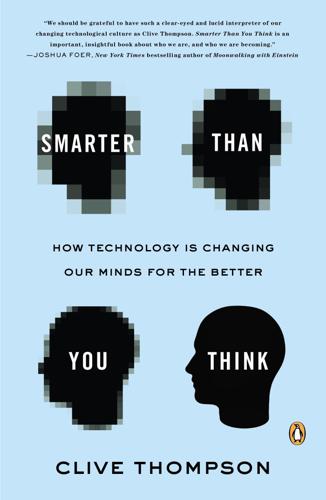
Smarter Than You Think: How Technology Is Changing Our Minds for the Better
by
Clive Thompson
Published 11 Sep 2013
These tutored students did far better; two standard deviations better, in fact. To get a sense of how much of an improvement that is, think of it this way: If you took a regular-classroom kid who was performing in the middle of the pack and gave her one-on-one instruction for a few months, she’d leap to the ninety-eighth percentile. This became known as the “Two Sigma” phenomenon, and in the decades since, public-school teachers have struggled to give students more one-on-one time. This isn’t easy, given that the average class in the United States has roughly twenty-five children. (Worse, after years of slightly falling, that number is now rising again, due to budget cuts.)
…
Chapter 7: Digital School When I visit Matthew Carpenter’s math class: Some of this reporting appeared originally in an article I wrote about the Khan Academy, “How Khan Academy Is Changing the Rules of Education,” Wired, August 2011, accessed March 24, 2013, www.wired.com/magazine/2011/07/ff_khan/. the “Two Sigma” phenomenon: Benjamin S. Bloom, “The 2 Sigma Problem: The Search for Methods of Group Instruction as Effective as One-to-One Tutoring,” Educational Researcher 13, no. 6 (June–July 1984), 4–16; and Benjamin S. Bloom, “The Search for Methods of Group Instruction as Effective as One-to-One Tutoring,” Educational Leadership 41, no. 8 (May 1984) 4–17.
…
See also cognition conversational thinkers, 11 Thomas, Dorothy, 58–60 Thomas, Douglas, 195 Thordarson, Kami, 176–78, 181 thoughtcasting, 222 Threadless, 169 3-D design, 111–13 benefits of, 112–13 3-D printers, 111–13 3-D scans, 113 Tiananmen Square rebellion, 271 Timehop, 39, 140 time-lapse video, 99–100 tip-of-the-tongue, 115–16 TiVo, 96 Topalov, Veselin, 3–4 TotalRecall, 19–23, 26 transactive memory, 124–31 benefits of, 128 collaborative inhibition, 131 human/machine collaboration, 126–31, 138–44 of married couples, 124–26, 134 Trivedi, Aseem, 275–76 Tufekci, Zeynep, 214, 258, 267 Tufte, Edward, 93 tummeling, 79–80 Tunisia, Arab Spring, 257 Twain, Mark, 224 Twenge, Jean, 221 Twiddler, 138 Twitter. See also social networks and ambient awareness, 210–44 characters limit, benefits of, 76 hashtag, development of, 65–66 learning digital etiquette on, 188 politics, exposure to, 262–63 size of following and retweets, 234–35 writing on, daily volume, 47 Two Sigma phenomenon, 177 Usenet, 149 Ushahidi, 62–63, 265–66 U.S. Library of Congress, 47 Vaingorten, Yaaqov, 162 Vaughn, Katherine, 255 Vibe, 81 video games, 147–51 collective knowledge applied to, 149–51 complexity, development of, 147–49 history/geography, learning, 199–202 scientific method, learning through, 196–99 video literacy, 94–105 collaborative projects, 101 future view, 106 popular tools, 96, 99 techniques used, 99–104 versus text-based ideas, 102–3 TV program analysis, 94–97 video sites, 99 Viégas, Fernanda, 91 Villasenor, John, 270–71 Virtual Fighter 3 (video game), 149 VK, 47 Voltolina, Laurentius de, 178–79 Wagenaar, Willem, 24–25 Wales, Jimmy, 163–64 Walk, Hunter, 103–4 Wang, Tricia, 212 Warhol, Andy, 238 Warner, Michael, 258 Watson supercomputer, 277–83, 286–88 Wattenberg, Martin, 91–92 wearable computer, 138–44 Wegener, Jonathan, 37–39 Wegner, Daniel, 124–26 Weibo, 109 Weinberg, Gabriel, 52–54, 56 Weinberger, David, 70 Weiner, Charles, 6 Wellman, Barry, 231 Weston, Edward, 110 Wikileaks, 273 Wikimedia Foundation, 161 Wikipedia and audience effect, 55–56 contributors, types of, 161 debate and article creation, 70–71 Five Pillars, 163 microcontributions, scale of, 161 reliability/error rates, 70 success, factors in, 163 Wikitorial, 159 Wilde, Oscar, 54 Williams, Heather, 88 wisdom of the crowds, 155–56 WITNESS, 274 Wittaker, Steve, 34–35 women’s magazines, photomanipulation in, 108 Wood, Matt T., 150–51 Woods, Andrew K., 253 word cloud, 88–89 Wordle, 88–89 WordPress, 47 word processor, 98–99 workplace e-mail free companies, 220 online distractions, 10 World of Warcraft (video game), 150, 196–97, 203 writing online, 45–82.
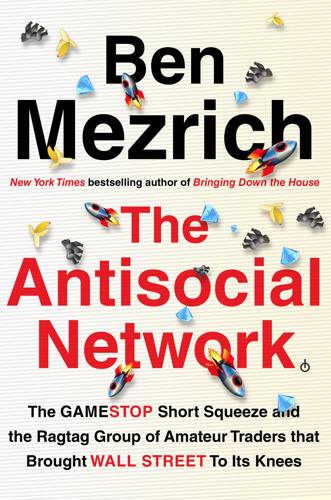
The Antisocial Network: The GameStop Short Squeeze and the Ragtag Group of Amateur Traders That Brought Wall Street to Its Knees
by
Ben Mezrich
Published 6 Sep 2021
“Payment for order flow” was a mouthful, and it didn’t make anywhere near as good copy as “democratizing finance.” In simple terms, Robinhood was able to offer zero commissions because their users weren’t actually their customers—they were, essentially, the product. Robinhood bundled up and sold their users’ trades to market makers—giant financial firms such as Two Sigma, Susquehanna, but primarily Citadel—who could near-instantly analyze the trading flow and profit by taking tiny slivers out of the spreads between bids and asks. Because Robinhood’s main users were amateurs who made risky trades—and more and more, gravitated toward more leveraged and even riskier plays such as options—Robinhood could command a premium from the market makers, whose profits went even higher the more volatile the trading flow.
…
The phone vibrated in her hand, and though she didn’t get confetti—she’d already enjoyed that spectacle when she’d bought the crap tickers weeks earlier—she did get a nice pulse of dopamine in her veins. Tomorrow morning, when the market opened, Robinhood would fire its arrows toward Citadel or Two Sigma or Susquehanna, and Kim would be well on her way. Chapter Ten No matter how much they tried to dress up the examination room—the jungle of potted plants by the door, the glossy posters of sun-bleached Greek Islands on the walls, the soft Muzak fluttering out of speakers hidden behind mountains of medical equipment, even the overpowered ventilation system that failed to mask the antiseptic bouquet characteristic of any remotely medical location—Sara couldn’t shake the anxiety that always seemed to hit her in places like this.
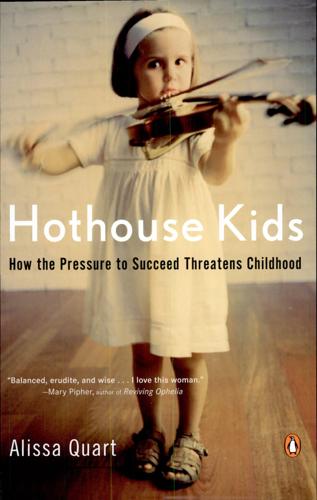
Hothouse Kids: The Dilemma of the Gifted Child
by
Alissa Quart
Published 16 Aug 2006
There’s the vigilantly minimalist decor—glass everywhere, white-lit hallways that resemble giant iMacs—and, walking through it all, hordes of informally dressed young people earning huge salaries. The company was cofounded in 1988 by David Shaw, a former professor of computer science at Columbia University, and John Overdeck, who came in with an educational background in statistics. Overdeck has since left the company in order to create Two Sigma. (Like Shaw, Overdeck’s new company advises job applicants to include their SAT scores, promising them coworkers who are “high achievers” with “Ph.D.s from top universities” as well as the Japanese national backgammon champion, an MIT-trained artificial intelligence expert, and a concert-level pianist.)
…
See contests and competitions; preaching tournaments toys and games, educational child development and history of versus learning with parent or peers marketing of maturational nostalgia of parents for solitary play Trends in International Mathematics and Science Study (TIMSS) Tsetsis, Angela tutoring services. See classes for infants and toddlers Two Sigma undiscovered gifted children Unequal Childhoods (Lareau) University of Connecticut, Neag Center for Gifted Education and Talent Development Urban Debate League (UDL) Urban Word NYC U.S. Physics Team USA Mathematical Olympiad (USAMO) V. Smile DVD Valenty, Ben Varner, Lynne Vasquez, Christopher Vaughan, Stewart velocity, educational videos.

Machine, Platform, Crowd: Harnessing Our Digital Future
by
Andrew McAfee
and
Erik Brynjolfsson
Published 26 Jun 2017
These companies sifted through large amounts of data, built and tested quantitative models of how assets’ prices behaved under different conditions, and worked to substitute code and math for individual judgment about what and when to buy. The best of these “quant” firms built up spectacular track records. D. E. Shaw had over $40 billion under management in October 2016, and its Composite Fund generated 12% annualized returns in the decade leading up to 2011. Two Sigma, a firm run by a former artificial intelligence academic and a mathematics Olympian, manages the $6 billion Compass Fund, which logged an annualized return of 15% over a decade. Almost every fund’s returns are dwarfed by those of the Medallion Fund, which exists within Renaissance and is open almost exclusively to its employees.
…
.: Uber Transportation Security Administration (TSA), 89 Tresset, Patrick, 117 trucking industry, 188 T-shirts, 264 tumors, 3D modeling of, 106 Turing, Alan, 66, 67n Tuscon Citizen, 132 TV advertising, 48–51 Tversky, Amos, 35 Twitter, 234 two-sided networks credit cards, 214–16 Postmates, 184–85 pricing in, 213–16, 220 pricing power of, 210–11 switching costs, 216–17 Uber, 200, 201, 218–19 two-sided platforms, 174, 179–80 Two Sigma, 267 Uber driver background checks, 208 future of, 319–20 information asymmetry management, 207–8 lack of assets owned by, 6–7 as means of leveraging assets, 196–97 network effects, 193, 218 as O2O platform, 186 origins, 200–202 and Paris terrorist attack, 55 pricing decisions, 212–15, 218–19 rapid growth of, 9 regulation of, 201–2 reputational systems, 209 routing problems, 194 separate apps for drivers and riders, 214 and Sydney hostage incident, 54–55 value proposition as compared to Airbnb, 222 UberPool, 9, 201, 212 UberPop, 202 UberX, 200–201, 208, 212, 213n Udacity, 324–25 unbundling, 145–48, 313–14 unit drive, 20, 23 Universal Music Group, 134 University of Louisville, 11 University of Nicosia, 289 unlimited service ClassPass Unlimited, 178–79, 184 Postmates Plus Unlimited, 185 Rent the Runway, 187–88 unsupervised learning, 76, 80–81 Upwork, 189, 261 Urmson, Chris, 82 used car market, information asymmetry and, 207 Usenet, 229, 271 user experience/interface as platforms’ best weapon, 211 and successful platforms, 169–74 users, as code developers, 242 “Uses of Knowledge in Society, The” (Hayek), 235–37 utilization rate, O2O platforms, 196–97 Van Alstyne, Marshall, 148 Van As, Richard, 272–74 Vancouver, Canada, Uber prohibition in, 202 venture capital, DAO vs., 302 verifiability, 248 verifiable/reversible contributions, 242–43 Verizon, 96, 232n Veronica Mars (movie), 262 Veronica Mars (TV show), 261–62 Viant, 171 video games, AI research and, 75 videos, crowd-generated, 231–32 Viper, 163 virtualization, 89–93; See also robotics vision, Cambrian Explosion and, 95 “Voice of America” (Wright), 229–30 von Hippel, Eric, 265 wage declines, 332 Wagner, Dan, 48–50 Waldfogel, Joel, 144 Wales, Jimmy, 234, 246–48 Walgreens, 185 Walmart, 7, 47 Wanamaker, John, 8–9 warehousing, 102–3, 188 Warner Brothers, 262 Warner Music Group, 134 Washington Post, 132 Washio, 191n waste reduction, 197 Watson (IBM supercomputer) health claim processing, 83 Jeopardy!

The Future of the Professions: How Technology Will Transform the Work of Human Experts
by
Richard Susskind
and
Daniel Susskind
Published 24 Aug 2015
By tailoring what is taught to each particular student, they seek to replicate the personal attention involved in the desirable, but unaffordable, system of intensive one-to-one tutoring. They are also known as ‘intelligent tutoring systems’. They try to solve the thirty-year-old ‘two sigma problem’—that an average student who receives one-to-one tuition will tend to outperform 98 per cent of ordinary students in a traditional classroom (they are around ‘two standard deviations’, or ‘two sigmas’, ahead of the average classroom student).65 This one-to-one model is, essentially, the tutorial system that has worked so effectively at the universities of Oxford and Cambridge since the nineteenth century.
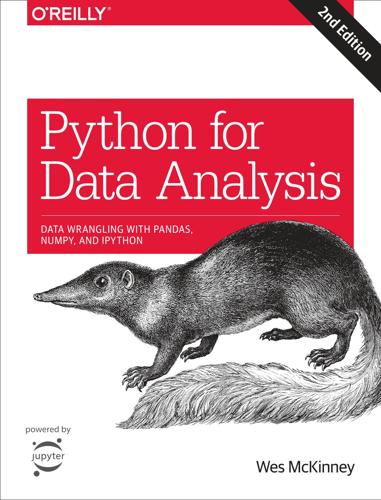
Python for Data Analysis: Data Wrangling with Pandas, NumPy, and IPython
by
Wes McKinney
Published 25 Sep 2017
Translating all this content and making it available to a broader audience is a huge and often thankless effort. Thank you for helping more people in the world learn how to program and use data analysis tools. I am also lucky to have had support for my continued open source development efforts from Cloudera and Two Sigma Investments over the last few years. With open source software projects more thinly resourced than ever relative to the size of user bases, it is becoming increasingly important for businesses to provide support for development of key open source projects. It’s the right thing to do. Acknowledgments for the First Edition (2012) It would have been difficult for me to write this book without the support of a large number of people.
…
Wes was later the cofounder and CEO of DataPad, whose technology assets and team were acquired by Cloudera in 2014. He has since become involved in big data technology, joining the Project Management Committees for the Apache Arrow and Apache Parquet projects in the Apache Software Foundation. In 2016, he joined Two Sigma Investments in New York City, where he continues working to make data analysis faster and easier through open source software. Colophon The animal on the cover of Python for Data Analysis is a golden-tailed, or pen-tailed, tree shrew (Ptilocercus lowii). The golden-tailed tree shrew is the only one of its species in the genus Ptilocercus and family Ptilocercidae; all the other tree shrews are of the family Tupaiidae.
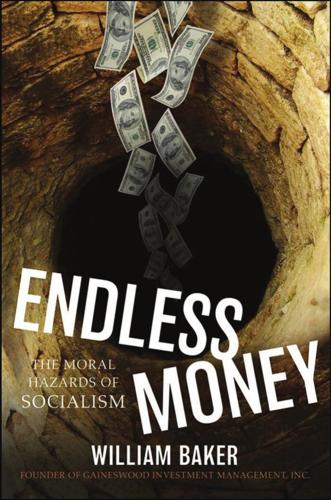
Endless Money: The Moral Hazards of Socialism
by
William Baker
and
Addison Wiggin
Published 2 Nov 2009
The assumptions of linearity and normally distributed outcomes are perhaps the most worrisome and limiting of thought, particularly because in the discipline of finance it has been almost unquestionably shown that six sigma events are happening with all too much regularity to be assumed random. (Two sigmas denote that in 95 percent of outcomes results will be within a stated boundary. A six sigma event is extremely rare; normally it would occur just 3.4 times in a million instances). The principals of Long-Term Capital Management, who had PhDs in economics, assumed away the possibility of rare outcomes with ruinous results for their investors.
…
The causal relationship between the housing problem and the broad financial system was very complex and difficult to predict.”4 It would only be hard to predict if one required a regression model that could be fed bites of data from short time periods chopped into months or weeks, then spit out an answer with two sigmas of accuracy that a bubble was underway or a collapse imminent. Knowing that a leverage problem develops over a long stretch of time and that it involves human psychology, the reality is that such a regression will never exist. In fact, it’s impossible, for if it did, all humans would be machines that never strayed far from a straight line, and there would neither have been business cycles nor hyperinflation and great depressions.

The Economic Singularity: Artificial Intelligence and the Death of Capitalism
by
Calum Chace
Published 17 Jul 2016
With $19 billion under management, AHL is the largest part of the MAN Group, which in turn is the world’s largest publicly-traded hedge fund.[cclvii] “The human mind has not become any better than it was 100 years ago, and it’s very hard for someone using traditional methods to juggle all the information of the global economy in their head,” says David Siegel of Two Sigma, another hedge fund which uses AI. “The time will come that no human investment manager will be able to beat the computer.”[cclviii] “Algo trading” has many critics in financial circles, who point out that they chase spurious correlations (such as the fact that divorce proceedings in Maine have consistently tracked sales of margarine), and that they can move markets in ways that are impossible to follow and are potentially dangerous.
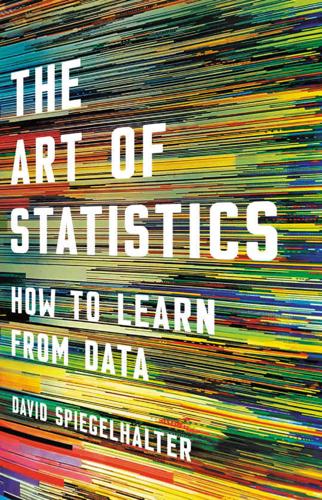
The Art of Statistics: How to Learn From Data
by
David Spiegelhalter
Published 2 Sep 2019
Crucially, a form of chisquared goodness-of-fit test revealed a P-value of less than 1 in 3.5 million, under the null hypothesis that the Higgs did not exist and the ‘hump’ was simply the result of random variation. But why was this reported as a ‘five-sigma’ discovery? It is standard in theoretical physics to report claims of discoveries in terms of ‘sigmas’, where a ‘two-sigma’ result is an observation that is two standard errors away from the null hypothesis (remember that we used sigma (σ) as the Greek letter representing a population standard deviation): the ‘sigmas’ in theoretical physics correspond precisely to the t-value in the computer output shown in Table 10.5 for the multiple regression example.
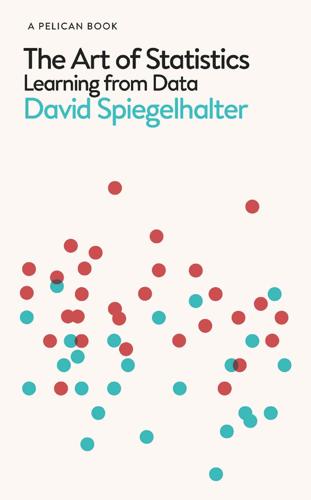
The Art of Statistics: Learning From Data
by
David Spiegelhalter
Published 14 Oct 2019
Crucially, a form of chi-squared goodness-of-fit test revealed a P-value of less than 1 in 3.5 million, under the null hypothesis that the Higgs did not exist and the ‘hump’ was simply the result of random variation. But why was this reported as a ‘five-sigma’ discovery? It is standard in theoretical physics to report claims of discoveries in terms of ‘sigmas’, where a ‘two-sigma’ result is an observation that is two standard errors away from the null hypothesis (remember that we used sigma (σ) as the Greek letter representing a population standard deviation): the ‘sigmas’ in theoretical physics correspond precisely to the t-value in the computer output shown in Table 10.5 for the multiple regression example.
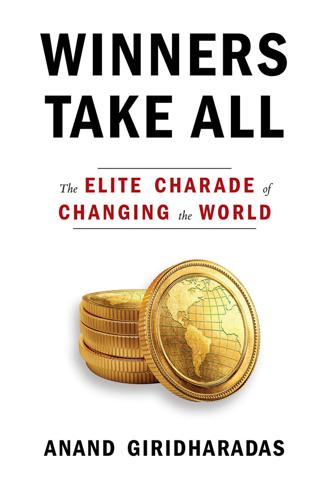
Winners Take All: The Elite Charade of Changing the World
by
Anand Giridharadas
Published 27 Aug 2018
It was a panel discussion about a collection of essays titled Philanthropy in Democratic Societies, featuring two of its editors and two others representing the giving world. The host for the event was David Siegel, a philanthropist who had reportedly made $500 million in a single year, and who had opened the offices of his hedge fund, Two Sigma, to host the event, despite the book’s rather critical take on philanthropists. The people who came, some to hear big philanthropy get its comeuppance, first gathered in the hedge fund’s airy kitchen, nibbling on miniature tacos the girth of a finger and sipping wine. Then the program began, and before long Chiara Cordelli, an Italian political philosopher at the University of Chicago who had coedited the collection and contributed an essay, found herself sitting two panel seats over from a philanthropist who embodied everything she challenged in her scholarly writings.
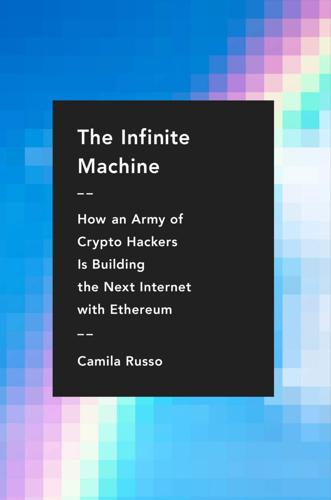
The Infinite Machine: How an Army of Crypto-Hackers Is Building the Next Internet With Ethereum
by
Camila Russo
Published 13 Jul 2020
They worked on the website and discussed things like the future organization’s structure, community outreach, and communications leading up to the crowdsale. Lorenzo was designing the Ethereum logo. Before they all arrived in Switzerland, Anthony D’Onofrio, aka Texture, had redesigned the Ethereum website and created a logo that combined two sigma symbols and looked somewhat like a diamond. Lorenzo took that as a starting point but wanted to create an image that better represented what he understood Ethereum was: an inclusive platform to be used by all humanity. It had to signal strength, but at the same time flexibility and transparency.
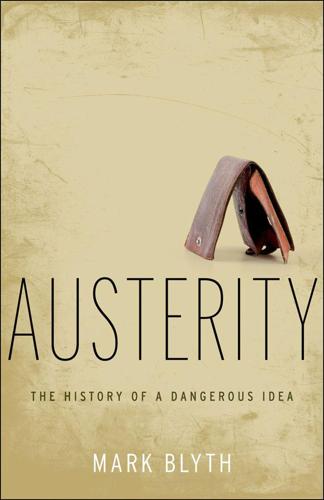
Austerity: The History of a Dangerous Idea
by
Mark Blyth
Published 24 Apr 2013
We find out that most people are between five and six feet tall, that far fewer people are either seven feet or three feet tall, and that no one in our sample is outside that range. Knowing this, we can figure out the probability of any one person of a given size being close to the mean of the distribution. Under a normal distribution, a one-sigma deviation means that there is a 68 percent chance that person is close to the mean height. Two sigmas translates into a 95 percent chance of being close to the mean, and so on, out into the (very) thin tails, where no one is ever eight feet tall. As the numbers get bigger, the probability of encountering someone of such an extreme size gets exponentially smaller. The chance that someone will fall completely outside the sample becomes so unlikely that you can basically forget about it.

Kanban in Action
by
Marcus Hammarberg
and
Joakim Sunden
Published 17 Mar 2014
For this example, that would be (31 + 23 + 19 + 24 + 22 + 21) / 6 = 24 days. One sigma is a bit tricky to understand and calculate. A sigma is a value that helps even out the effects of outliers. A statistical rule called the 68-95-99.7 rule[14] states that 68% of all values lie one standard deviation (called one sigma) from the mean. With two sigmas from the mean, you cover 95% of all values. Finally, with three sigmas, you cover 99.7%. Calculating one sigma[15] from a sample is pretty advanced mathematics, but thankfully almost all spreadsheet programs have formulas for that in their arsenal.[16] With this sample, you get STDEVP(31,23,19,24,22,21) ≈ 3.4. 14 See http://en.wikipedia.org/wiki/68-95-99.7_rule. 15 See http://en.wikipedia.org/wiki/Standard_deviation. 16 In Excel it’s called DSTDEVP, and for Google spreadsheets it’s called STDEVP.

Human Frontiers: The Future of Big Ideas in an Age of Small Thinking
by
Michael Bhaskar
Published 2 Nov 2021
Reinhardt, Ben (2021), Shifting the impossible to the inevitable: A Private ARPA User Manual, benreinhardt.com, accessed 12 April 2021, available at https://benjaminreinhardt.com/parpa Reller, Tom (2016), ‘Elsevier publishing – a look at the numbers, and more’, Elsevier.com, accessed June 8, 2019, available at https://www.elsevier.com/connect/elsevier-publishing-a-look-at-the-numbers-and-more Renwick, Chris (2017), Bread For All: The Origins of the Welfare State, London: Allen Lane Reynolds, Matt (2020), ‘DeepMind's AI is getting closer to its first big real-world application’, Wired, accessed 5 February 2020, available at https://www.wired.co.uk/article/deepmind-protein-folding-alphafold Ricón, José Luis (2015), ‘Is there R&D spending myopia?’, Nintil, accessed 6 January 2021, available at https://nintil.com/is-there-rd-spending-myopia/ Ricón, José Luis (2019), ‘On Bloom's two sigma problem: A systematic review of the effectiveness of mastery learning, tutoring, and direct instruction’, Nintil, accessed 20 July 2020, available at https://nintil.com/bloom-sigma/ Ricón, José Luis (2020a), ‘Fund people, not projects I: The HHMI and the NIH Director's Pioneer Award’, Nintil, accessed 24 January 2021, available at https://nintil.com/hhmi-and-nih/ Ricón, José Luis (2020b), ‘Was Planck right?

Building Habitats on the Moon: Engineering Approaches to Lunar Settlements
by
Haym Benaroya
Published 12 Jan 2018
If designing for strength, then the upper sigma bound can be used to size the structural components. How wide or narrow the sigma bounds are depends on the underlying density function. For parameters governed by the Gaussian probability density, there is a probability of 0.6827 of being within the one-sigma bounds, and a probability of 0.9545 of being within the two-sigma bounds. Different densities have different probabilities for their sigma bounds. There is no easy or clear-cut answer regarding how many sigma bounds to use in a design. The designer must study the data in order to better understand the underlying density. As a practical matter, by retaining larger sigma bounds in the design, it becomes more conservative, which leads to a costlier structure or product.
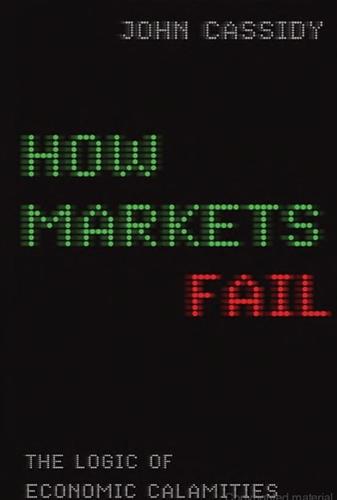
How Markets Fail: The Logic of Economic Calamities
by
John Cassidy
Published 10 Nov 2009
Once you have worked out the mean price movement and the standard deviation, which is usually referred to as the Greek letter sigma, you are almost done: the normal distribution does the rest of the work. It will tell you that the chances of the stock rising or falling by more than the sigma you worked out is roughly one in three; the odds of the stock moving by more than two sigma is about one in twenty; and the probability of it moving by more than three sigma is about one in three hundred. Note the economy of this procedure, which can be applied to Treasury bonds, mortgage bonds, currencies, commodities, or any other asset that is subject to random movements in prices.
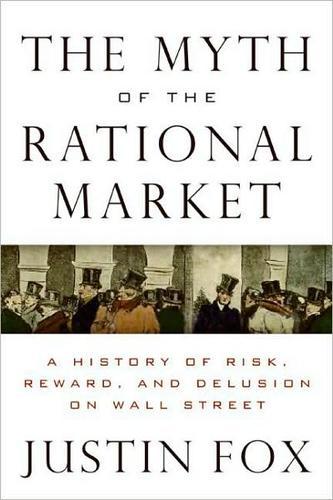
The Myth of the Rational Market: A History of Risk, Reward, and Delusion on Wall Street
by
Justin Fox
Published 29 May 2009
Paul Samuelson bought Berkshire shares, and called Buffett “as near to a genius as I have observed.” Bill Sharpe described him as “a three-sigma event,” a one in four hundred investor. That was a dismissive sort of praise. What could one possibly learn from such a rare bird? But in the 1980s a few rational market types, believing themselves to be at least two-sigma events, began trying to beat the market themselves. PAUL SAMUELSON WAS, AS SO often, ahead of the crowd. In 1969, one of his former students—who had written his Ph.D. dissertation on The Dynamics of the World Cocoa Market—correctly warned his employer, Nestlé, that cocoa prices were about to skyrocket.

Power and Progress: Our Thousand-Year Struggle Over Technology and Prosperity
by
Daron Acemoglu
and
Simon Johnson
Published 15 May 2023
Presented to Parliament, November 1942. http://pombo.free.fr/beve ridge42.pdf. Blake, Robert. 1966. Disraeli. London: Faber and Faber. Blodget, Henry. 2009. “Mark Zuckerberg on Innovation.” Business Insider, October 1. www.businessinsider.com/mark-zuckerberg-innovation-2009-10. Bloom, Benjamin. 1984. “The Two Sigma Problem: The Search for Methods of Proof Instruction as Effective as One-To-One Tutoring.” Educational Researcher 13, no. 6: 4‒16. Bloom, Nicholas, Charles I. Jones, John Van Reenen, and Michael Webb. 2020. “Are Ideas Getting Harder to Find?” American Economic Review 110, no. 4: 1104‒1144. Bonin, Hubert. 2010.
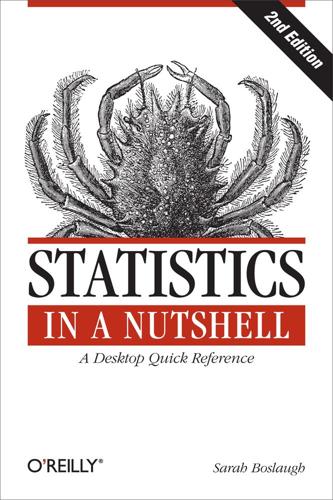
Statistics in a Nutshell
by
Sarah Boslaugh
Published 10 Nov 2012
A control chart with the addition of control limits translates this information so the distribution of points is on the y-axis, whereas the x-axis displays the time or order of samples charted. The different ranges are often labeled as shown in Figure 14-29. Figure 14-29. Control chart with sigma ranges In this chart: Zone A, or the three-sigma zone, is the area between two and three σ of the centerline. Zone B, or the two-sigma zone, is the area between one and two σ of the centerline. Zone C, or the one-sigma zone, is the area within one σ of the centerline. These zones are used in conjunction with a set of pattern analysis rules to determine when a process has gone out of control. Because both the mean value and variability of the samples are important when determining whether a process is in control, control charts are usually produced in pairs, one representing mean values of the samples and one representing their variability.